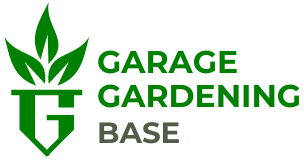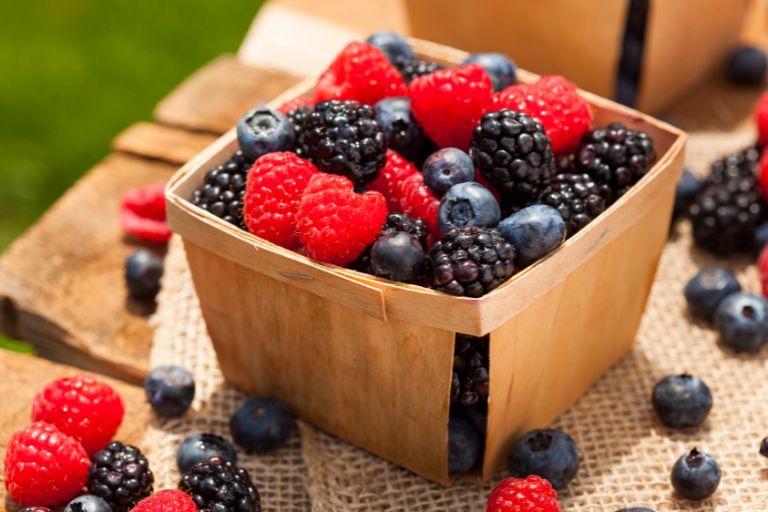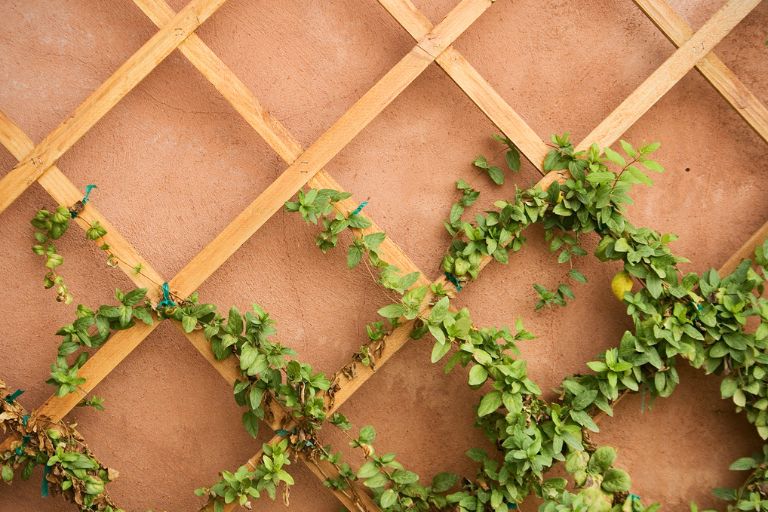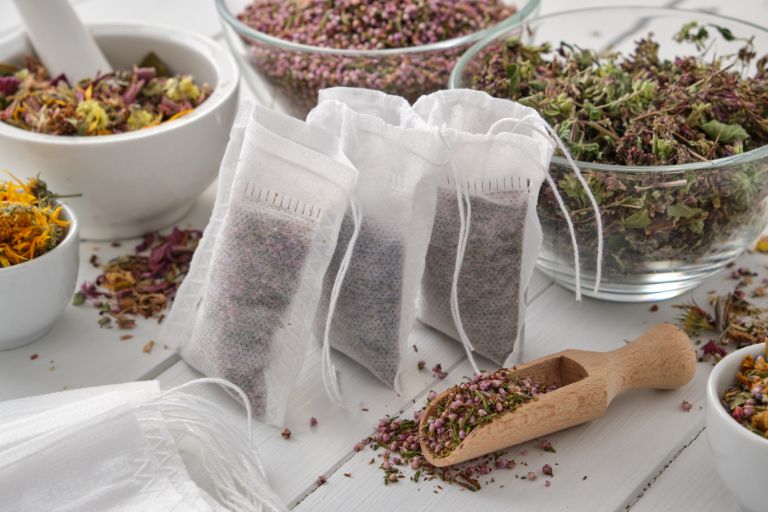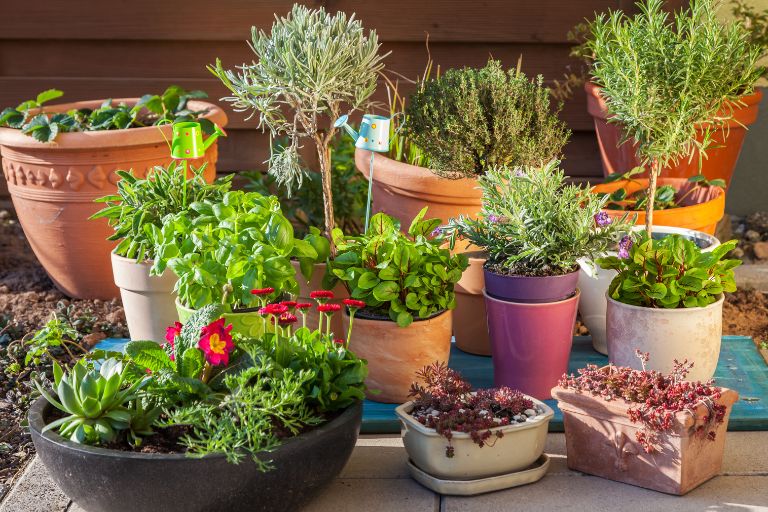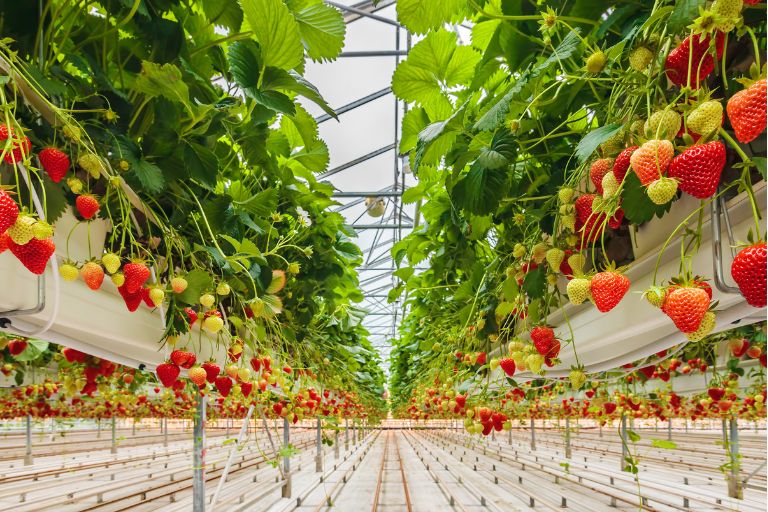Container Gardening for Small Spaces in Your Garage
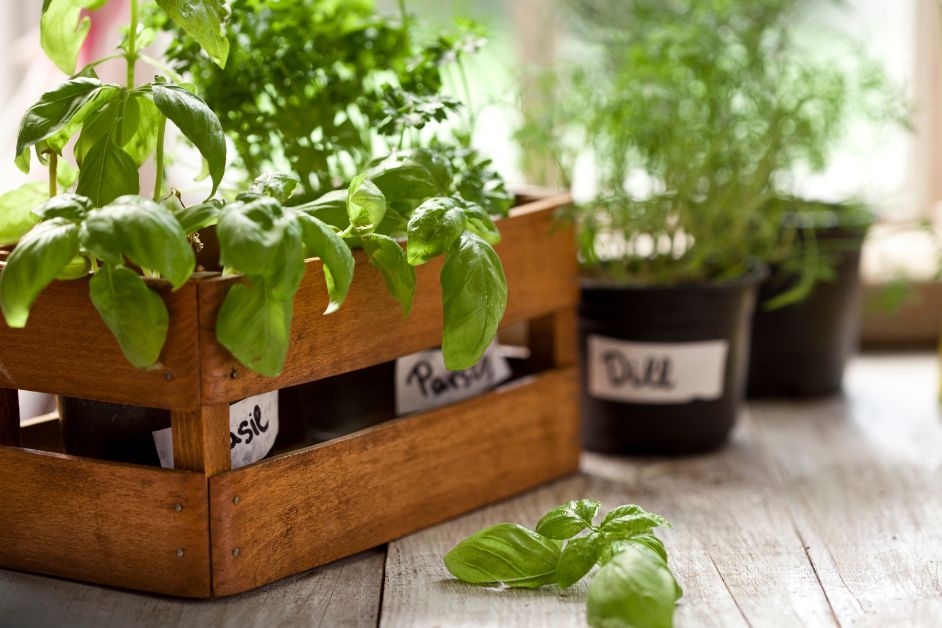
Do you dream of having your own garden, but don’t have a garden or enough space for a traditional garden? Look no further than container gardening! Container gardening is a great way to grow plants in a small space, and it’s particularly suitable for garages. With the right containers, plants and growing conditions, you can create a thriving garden in your garage that provides fresh herbs, vegetables and flowers all year round. In this post, we’ll show you how to create a container garden in your garage, choose the right plants, and give you tips on how to maintain your garden so you can enjoy the beauty and benefits of gardening no matter how small your space. So grab your gardening gloves and let’s get started!
Choosing the Right Containers
When it comes to container gardening in a garage, the type of container you choose is important for the health and success of your plants. Below are some container options suitable for garage container gardening:
Pots – Pots are the classic container for growing plants and are suitable for a wide range of plants including herbs, vegetables and flowers. They come in a range of sizes, shapes and materials, including terracotta, ceramic, plastic and fabric. Choose a size that suits the plant you want to grow and make sure the pot has drainage holes to prevent waterlogging.
Hanging baskets – Hanging baskets are a great option for growing plants vertically and are perfect for small spaces. They come in a range of sizes and materials, including plastic and wire. Hanging baskets are ideal for plants such as strawberries, trailing herbs and flowers.
Window boxes – Window boxes are designed to be placed outside windows, but they can also be used indoors in a garage. They are a great option for growing plants in a small space and can be used to grow herbs, flowers or even vegetables. Window boxes come in a variety of materials including wood, metal and plastic.
Vertical gardens – Vertical gardens are becoming increasingly popular in small space gardening. They can be used to create a living wall and can be installed on any wall in a garage. They are available in a range of materials and designs and can be used to grow a variety of plants.
When selecting containers for your garage garden, it’s important to consider the space available, the plant’s requirements, and the container’s material.
Selecting the right container is key to the success of your garage garden. Here are some tips to keep in mind when selecting containers:
Material – Choose containers made from materials that are durable and suitable for indoor gardening. Terracotta and ceramic pots are classic choices that add an attractive aesthetic to your garden. Plastic containers are lightweight and easy to move around, while fabric pots are great for root aeration. Metal containers are also an option, but can heat up quickly and potentially damage the roots of your plants.
Size – Consider the size of the pot carefully. Too small a container can restrict the plant’s growth and too large a container can lead to over-watering and root rot. A good rule of thumb is to choose a container that is 1-2 inches larger than the root ball of the plant you want to grow.
Drainage – Proper drainage is essential for the health of your plants. Make sure the container you choose has drainage holes to allow excess water to escape. Without drainage holes, water can accumulate and cause root rot.
Aesthetics – Consider the aesthetic value of the planter. A well-designed container can add to the overall look and feel of your garage garden. Choose containers that complement the colour scheme of your garage and create a pleasing visual display.
Considering these factors will help you choose the best containers for your garage garden. Remember that different plants have different needs and you may need to choose different containers for different plants.
Selecting the Right Plants
Container gardening in a garage is a great way to grow plants in a small space, and there are many types of plants that work well in this environment. Below are some excellent plant options for container gardening in a garage:
Vegetables – Many types of vegetables can be grown in containers in a garage. Leafy vegetables such as lettuce and spinach can be grown in containers with partial shade. Root vegetables such as carrots and radishes do well in deeper containers with well-drained soil. Tomatoes and peppers can also be grown in containers with plenty of sunlight.
Herbs – Herbs are great for container gardening in a garage. They don’t take up much space and can add great flavour to your cooking. Popular herbs for container gardening include basil, thyme, parsley and mint.
Flowers – Flowers can add a lovely touch to your garage garden. Petunias, marigolds and impatiens are good choices for containers in partial shade, while geraniums and sunflowers do well in containers in full sun.
Succulents – Succulents are a great option for low-maintenance container gardening in a garage. They thrive in well-drained soil and require little watering. Some popular succulents for container gardening are aloe vera, jade plant and string of pearls.
When choosing plants for your garage garden, consider the amount of sunlight your garage receives, the size of your containers and the climate in your area. Some plants may require special care, such as fertilising or pruning.
Here are some guidelines to help you choose the perfect plants for your indoor garage garden:
Choose plants that are suitable for indoor growing – Many plants can be grown indoors, but not all are suitable for an indoor garage garden. Look for plants that thrive in low light and cooler temperatures, as these are common conditions in a garage. Plants that are adapted to growing indoors, such as African violets, spider plants and snake plants, can thrive in a garage environment.
Choose compact varieties – Because space in a garage is limited, it’s important to choose plants that don’t take up a lot of room. Look for compact varieties, such as cherry tomatoes or dwarf citrus trees. Herbs such as basil and chives are also great options for small spaces.
Consider the light requirements of the plant – Different plants have different light requirements, so it’s important to choose plants that are appropriate for the amount of light your garage receives. If your garage doesn’t get much natural light, look for plants that thrive in low light, such as Peace Lilies or ZZ plants. If your garage has plenty of natural light, look for plants that need full sun, such as tomatoes or peppers.
Research the plant’s care requirements – Before choosing a plant, research its care requirements to ensure you can provide the right conditions for it to thrive. Some plants require more frequent watering, while others can tolerate drying out between waterings. Consider whether the plant needs fertiliser or pruning, and whether it’s susceptible to pests or diseases.
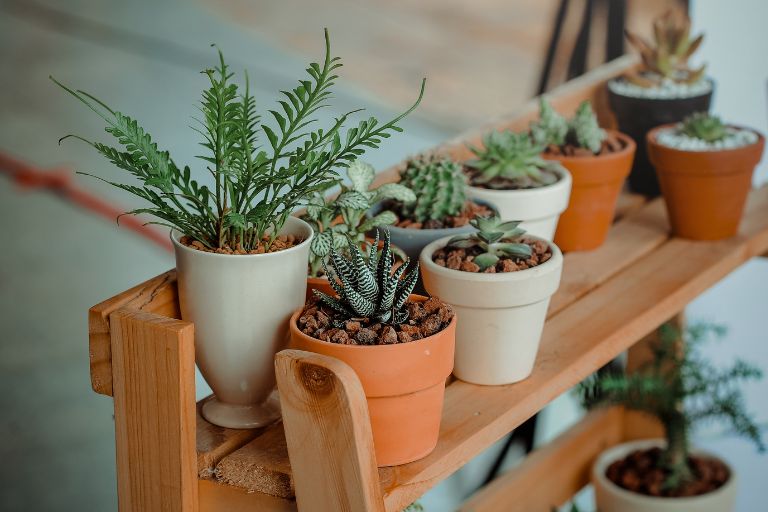
Setting Up Your Container Garden
When creating a container garden in a garage, several important factors need to be considered to ensure that your plants thrive. Here are some key considerations to keep in mind:
Lighting – Adequate lighting is essential for plants to grow and thrive. Most plants need at least six hours of direct sunlight a day, but if your garage doesn’t get enough natural light, you can use artificial lighting to supplement this. LED grow lights are a popular choice for indoor gardening as they are energy efficient and provide the full spectrum of light that plants need to grow.
Temperature – The temperature in your garage can affect the growth and health of your plants. Most plants do well in temperatures between 60 and 75 degrees Fahrenheit, but it’s important to avoid extremes. Temperatures above 85 degrees Fahrenheit can cause heat stress, while temperatures below 50 degrees Fahrenheit can slow plant growth or even kill the plant.
Humidity – Humidity levels can affect how well plants grow and how resistant they are to pests and disease. The air in a garage can be dry, which can cause plants to dry out or become more susceptible to pests. You can increase the humidity in your garage by misting your plants or using a humidifier.
Air circulation – Good air circulation is important for plants as it helps to prevent pests and diseases. You can increase air circulation in your garage by opening windows or using fans.
Watering and fertilising – Proper watering and fertilising are essential for container gardening in a garage. Make sure you use well-draining soil and water your plants thoroughly, but avoid overwatering as this can cause root rot. Feed your plants regularly to give them the nutrients they need to grow.
Creating the ideal growing conditions for a container garden in a garage is important to ensure the health and productivity of your plants. Here are some guidelines for creating optimal growing conditions for your indoor garden:
Use grow lights – If your garage doesn’t get enough natural light, supplementing it with artificial light is essential. LED grow lights are a popular choice for indoor gardening as they provide the full spectrum of light that plants need to grow, while being energy efficient and producing little heat.
Ensure good ventilation – Good air circulation is important for plants as it helps to prevent the build-up of pests and diseases. You can increase air circulation in your garage by opening windows or using fans. However, be careful not to expose your plants to cold draughts or excessive heat.
Control the temperature – Most plants do well in temperatures between 60 and 75 degrees Fahrenheit, but it’s important to avoid extremes. You can use a space heater or air conditioner to regulate the temperature in your garage, or consider insulating your garage to maintain a consistent temperature.
Monitor humidity levels – Humidity levels can affect how well plants grow and how resistant they are to pests and disease. The air in a garage can be dry, which can cause plants to dry out or become more susceptible to pests. You can increase the humidity in your garage by misting your plants or using a humidifier.
Use well-draining soil – Good soil drainage is essential for container gardening as it helps to prevent root rot and other water-related problems. Use a good quality potting mix designed specifically for container gardening, as these mixes usually provide good drainage while retaining enough moisture to keep plants healthy.
Maintaining Your Container Garden
Proper maintenance is crucial to the health and productivity of a container garden in a garage. Below are some important maintenance tasks that must be done:
Watering – Consistent watering is essential for container gardening. Make sure you water your plants thoroughly and regularly, but be careful not to overwater as this can cause root rot. A good rule of thumb is to water your plants when the top inch of soil feels dry.
Fertilising – Fertilising your plants regularly is important for maintaining their health and productivity. Use a balanced, water-soluble fertiliser to provide your plants with the nutrients they need. Follow the instructions on the package for best results.
Pruning – Pruning is essential to maintain the shape and health of your plants. Regularly remove dead or damaged leaves, stems and flowers and consider pruning back larger plants to encourage bushier growth.
Pest and disease control – Container gardens in a garage can be susceptible to pests and diseases. Check your plants regularly for signs of pests or disease and take appropriate measures to control them. This may include using natural pest control methods or applying organic or chemical pesticides.
Soil care – Proper soil care is important for the health of your plants. Regularly remove debris and dead plant material from the soil surface and consider adding compost or other organic matter to improve soil fertility and structure.
Maintaining healthy plants is crucial to the success of your garage container garden. Below are some extra tips to help keep your plants healthy:
Use a self-watering system – Self-watering systems can be a great way to maintain consistent soil moisture levels and prevent over or under watering. These systems work by wicking water up from a reservoir at the bottom of the container, allowing plants to absorb water as they need it. There are many types of self-watering systems available, including planters with built-in reservoirs or wicking mats.
Add organic matter to the soil – Adding organic matter to the soil can help improve soil fertility, structure and water-holding capacity. You can add compost, worm castings or other organic matter to the soil when you plant, or apply it as a top dressing throughout the growing season.
Monitor light levels – Plants need the right amount of light to grow and thrive. Monitor the light levels in your garage and adjust your lighting system or plant placement if necessary. If you notice that your plants are stretching or leaning towards the light, you may need to move them closer to your grow lights or provide additional lighting.
Keep an eye out for pests and diseases – Pests and diseases can quickly take over a container garden if left unchecked. Be sure to check your plants regularly for signs of pests or disease, and take steps to control them as soon as you notice a problem. Using natural pest control methods, such as introducing beneficial insects or using insecticidal soap, can help control pests without harming your plants.
Choose the right plants – Some plants are better suited to container growing than others. Choose plants that are compact, don’t take up much space and are well suited to indoor growing conditions. Research the specific needs of each plant you want to grow and make sure you can meet those needs in your garage.
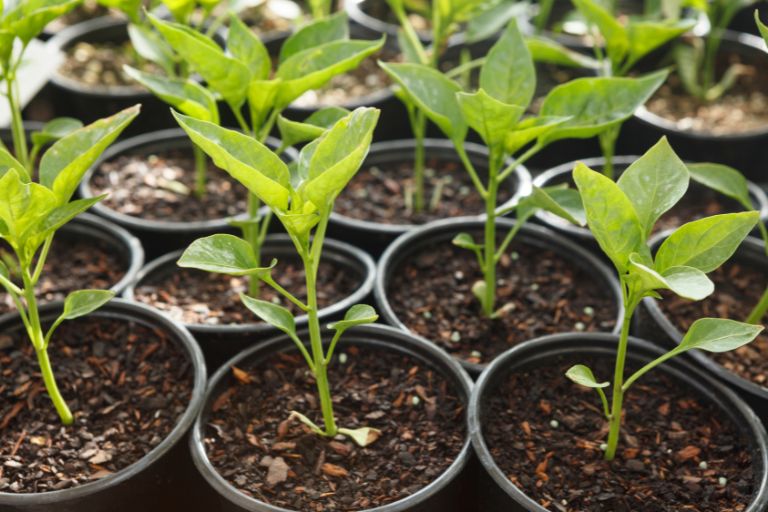
Creative Container Gardening Ideas
Container gardening in a garage can be a fun and creative way to grow plants in a limited space. Below are some ideas to inspire your own unique container garden:
Use recycled containers – Look around your home for containers that can be repurposed as planters, such as old coffee cans, tea kettles or even an old pair of rain boots. Make sure you drill holes in the bottom for drainage and add a layer of gravel or perlite to the bottom.
Incorporate vertical gardening techniques – Using vertical space can be a great way to maximise growing space in a small garage. Consider hanging plants from the ceiling or creating a vertical garden wall using a trellis or vertical planter. This can add visual interest and help create a lush, green space in your garage.
Create a themed garden – Use your imagination to create a themed container garden, such as a pizza garden with tomatoes, basil and peppers, or a fragrant herb garden with lavender, rosemary and thyme. Not only will this add a unique touch to your garage, but it can also inspire you to get creative in the kitchen.
Use colourful and decorative containers – Adding colourful or decorative containers to your garage can add a fun and cheerful touch to your space. Consider using bright, bold colours or whimsical designs to create a visually appealing garden.
Mix different types of plants – Try mixing different types of plants in the same container to create a varied and interesting display. For example, you could combine herbs, flowers and vegetables in the same planter for a visually appealing and practical container garden.
Create a mini greenhouse – If your garage doesn’t have enough natural light for your plants, consider creating a mini greenhouse by installing clear plastic sheeting over a frame or shelf. This can help to trap heat and moisture, creating a warm and humid environment that is ideal for many plants.
Creating an aesthetically pleasing container garden is a great way to transform your garage into a beautiful and inviting space. To create a visually appealing container garden, consider the following suggestions:
Choose colourful containers – When choosing containers for your plants, consider bright and colourful containers. This can help add a pop of colour and make your container garden more visually appealing.
Choose plants with different colours and textures – Incorporating a variety of plant colours and textures can add visual interest to your container garden. Consider choosing plants with different leaf shapes, textures and colours to create a visually appealing arrangement.
Group plants by height – Grouping plants of different heights can create a visually interesting arrangement. Consider placing taller plants towards the back of the container and shorter plants towards the front to create depth.
Use trailing plants – Trailing plants, such as ivy or petunias, can create a beautiful cascading effect in your container garden. Consider placing them around the edges of the container to create a fuller, lush look.
Create a focal point – Consider adding a focal point to your container garden, such as a large and visually striking plant or decorative object. This can help draw the eye and create a more visually cohesive arrangement.
Mix up container sizes – Using containers of different sizes and shapes can add visual interest to your container garden. Consider using large statement planters alongside smaller containers to create a more dynamic arrangement.
Container gardening in a garage is a great way to bring the beauty of plants and greenery indoors, even where space is limited. By choosing the right containers and plants, and creating the right growing conditions, you can enjoy the benefits of gardening in the comfort of your own home. Some of the benefits of container gardening in a garage include creating a more inviting and aesthetically pleasing space, improving air quality and providing the opportunity to grow your own fresh herbs, vegetables and fruit. In addition, container gardening in a garage can be a fun and rewarding activity to share with children or loved ones. So whether you have limited outdoor space or simply want to bring some greenery indoors, why not try container gardening in your own garage? With a little creativity and a few simple tips, you can transform your garage into a thriving indoor garden in no time.
